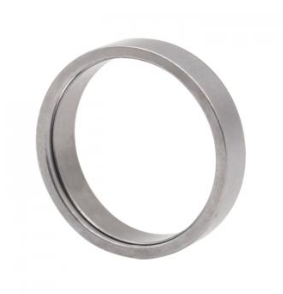Current Status of Expanding Sleeves
Expanding sleeves (also known as shrink discs) are widely used in various industrial applications such as water pipelines, gas pipelines, and heating systems. These components offer the advantage of easy disassembly of connected parts, making maintenance and repairs more convenient. The input end is often connected to a flywheel, while the output end connects to a gearbox input flange, preventing rust. When the sleeve is expanded, the contact surfaces tightly adhere, preventing corrosion and making it easier to disassemble. During assembly, loosening the bolts allows the expanding sleeve to effectively bind the hub with a larger fit clearance.
Types of Expanding Sleeves
- Spiral Welded Expanding Sleeves: These are made by welding steel plates that are rolled into a tube shape with either a butt or spiral seam. There are no unified product standards for these sleeves, and they are typically made from ordinary carbon steel such as Q235 or Q235F. The manufacturing and inspection errors sometimes lead to partial contact between the spindle and the tapered sleeve. These sleeves are commonly used in various fluid and gas pipelines, and they help in transferring high-torque loads smoothly.
- High-Elastic Expanding Sleeves: These are composed of elastic torque transmission components, diaphragm parts, and connecting components. They are typically used for transmitting power, where the elastic elements allow for smooth operation and help in accommodating varying shaft diameters. The axial dimensions can be adjusted with shims, providing precise and convenient installation.
- Seamless Expanding Sleeves: These are typically used for liquid and gas pipelines, as well as in high-torque applications. They are made from seamless tubing and offer high durability and pressure resistance. This type of expanding sleeve has become increasingly popular due to its robustness and versatility.
Applications in Industry
The current market demand for expanding sleeves in China was estimated to be around 31.3 billion RMB in 2006, with domestic supply totaling approximately 23 billion RMB. The market satisfaction rate for locally produced sleeves is about 73.5%. The imported expanding sleeves mainly consist of automotive parts and various decorative components. The demand for welded expanding sleeves, which are manufactured using rolled steel plates, is particularly high in applications requiring low-pressure fluid transport and high-strength performance.
Expanding sleeves are used not only for traditional mechanical systems but also for adjusting the speed of asynchronous electric motors. By changing the frequency of the power supply, the motor’s rotational speed can be adjusted, offering a smooth and continuous speed variation for AC motors. Asynchronous motors with expanding sleeves are often used in industrial applications where speed control and torque transmission are critical.
Considerations for Use
When using expanding sleeves, especially in high-torque transmission systems such as universal joints, it is crucial to consider the installation and alignment to ensure that vibrations or shocks do not adversely affect the mechanical system. It is recommended that the splined connections be placed away from sources of vibration to maximize efficiency and extend the lifespan of the components.
Future Development
The main task for the future of expanding sleeves in the industrial sector is to replace high-priced imported products with more cost-effective domestic options. As the manufacturing processes evolve, different variations of welded expanding sleeves, such as low-pressure fluid transport and spiral seam welded sleeves, are being developed to meet the increasing demand for high-performance and durable components.
Conclusion
Expanding sleeves are critical components in a wide range of industries, offering high efficiency, ease of maintenance, and versatility in different applications. With ongoing improvements in manufacturing techniques and material science, expanding sleeves are expected to continue playing a vital role in the development of mechanical systems and energy-efficient technologies.

